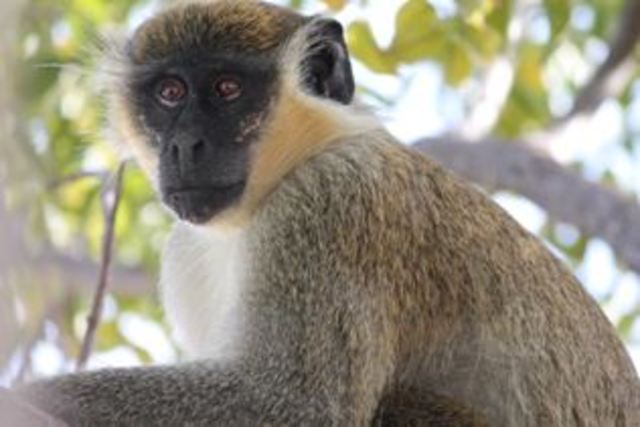While west Orange County sweats over king cobras – Monkey business abounds at Dania Beach

ADVANCE FOR THE WEEKEND OF AUG. 29-30 AND THEREAFTER – An undated photo provided by Missy Williams and the Broward College Anthropology Department shows African velvet monkeys that are descendants of a group of monkeys that escaped from a tourist attraction in Dania Beach, Fla., in the 1950s. A colony of about 35 monkeys lives in a mangrove forest just east of U.S. 1, living off food they find in the forest and handouts from people who work nearby. (Missy Williams/Broward College Anthropology Department via AP)
DANIA BEACH, Fla. – For half a century, they have haunted the swampy forests east of Federal Highway.
The Dania Beach monkeys, African vervet monkeys thought to have been released by an old tourist attraction in the 1950s, beg bananas, mangoes and other handouts from people who live and work at the edges of their habitat.
The monkey colony has been a shadowy, little-known aspect of South Florida life, with the monkeys hiding in the almost impenetrable mangrove forests west of Port Everglades. But a Ph.D. student at Florida Atlantic University has begun shedding light on them, launching the first systematic study of them in 20 years. Her initial conclusions: Despite talk that the colony was dying out, it appears to be stable and enjoys broad popularity in the surrounding community.
The rest of the story is here: https://shar.es/1vJD6E via @ndn
Discussion ¬